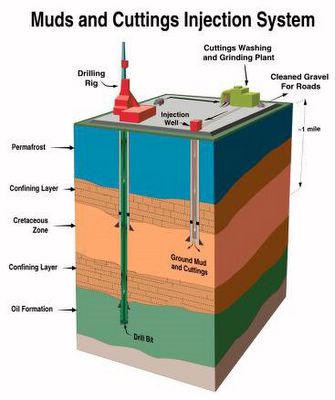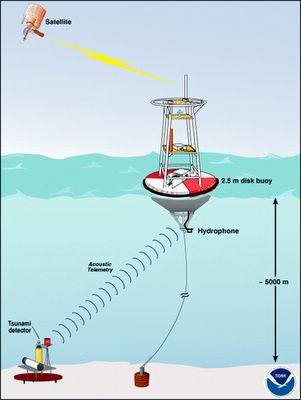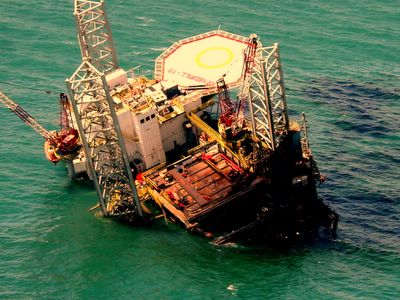 Even Paris Hilton can get this picture? You don't have to be a scientist to understand Earth. You don't have to be a geophysicist to take ownership.Protect your planet, it's the only one you've got ! Simple. Easy to understand. Straight talk about straight forward subjects. Don't believe the double talk. This stuff is for real.
Even Paris Hilton can get this picture? You don't have to be a scientist to understand Earth. You don't have to be a geophysicist to take ownership.Protect your planet, it's the only one you've got ! Simple. Easy to understand. Straight talk about straight forward subjects. Don't believe the double talk. This stuff is for real.
 The Chicago StormsTom Skilling, WGN-TV chief meteorologist Published September 23, 2006With a 140 mph jet stream directly overhead, a strong influx of warm, moist air from the Gulf of Mexico, and a warm front just to the west and south of Chicago, all the ingredients were set for a severe storm outbreak late Friday afternoon. Heavy downpours hit in eastern Kane, northern DuPage, and northern Cook counties. St. Charles and Mount Prospect reported over 3 inches of rain in an hour and a half. Those areas and many others reported flooded streets and paralyzed traffic. O'Hare's 1.73 inch total far exceeded the previous record (1.09 inches in 1965) for Sept. 22. Aided by instability created by the diverging jet stream flow aloft and the converging winds at the warm frontal boundary below, towering storms built to 58,000 feet tall. Downdrafts resulted in widespread hail and wind damage (70 mph reported at Hanover Park and 60 mph near West Chicago). Funnel cloud reports and Doppler radar signatures prompted at least seven tornado warnings.................................................................JUST AS A SIDE NOTE to the entries below regarding 'injection wells.' They are a National Security Risk. From the stand point of earthquakes and any concept that a large impact bomb could cause some serious release of 'who knows what.' That is why it is important to find a way to 'seal' the subsurface wells with other methods such as dilution of other chemicals that interact with the contaminant to neutralize it and/or create a viscous solution that is impossible to disrupt no matter what.
The Chicago StormsTom Skilling, WGN-TV chief meteorologist Published September 23, 2006With a 140 mph jet stream directly overhead, a strong influx of warm, moist air from the Gulf of Mexico, and a warm front just to the west and south of Chicago, all the ingredients were set for a severe storm outbreak late Friday afternoon. Heavy downpours hit in eastern Kane, northern DuPage, and northern Cook counties. St. Charles and Mount Prospect reported over 3 inches of rain in an hour and a half. Those areas and many others reported flooded streets and paralyzed traffic. O'Hare's 1.73 inch total far exceeded the previous record (1.09 inches in 1965) for Sept. 22. Aided by instability created by the diverging jet stream flow aloft and the converging winds at the warm frontal boundary below, towering storms built to 58,000 feet tall. Downdrafts resulted in widespread hail and wind damage (70 mph reported at Hanover Park and 60 mph near West Chicago). Funnel cloud reports and Doppler radar signatures prompted at least seven tornado warnings.................................................................JUST AS A SIDE NOTE to the entries below regarding 'injection wells.' They are a National Security Risk. From the stand point of earthquakes and any concept that a large impact bomb could cause some serious release of 'who knows what.' That is why it is important to find a way to 'seal' the subsurface wells with other methods such as dilution of other chemicals that interact with the contaminant to neutralize it and/or create a viscous solution that is impossible to disrupt no matter what. 
The United States had a huge supercell that is already noted on this blog. It occurred because of the dense carbon dioxide layer PRODUCED in this country. The six people that died are as much the responsibility of any of us. If we don't stop doing this to Earth we won't have an Earth to live on. It has gone to far and now the Oil Giants that the current administration compensates with American Tax Dollars are seeing their role as greater and more extensive all the time. It can no longer be a priority to drill deeper and longer to sustain an oil supply. We need alternatives and we need them now !6 Die in Storms and Flooding By THE ASSOCIATED PRESSLOUISVILLE, Ky., Sept. 23 (AP) — Heavy rain, strong winds and tornadoes pounded parts of the Midwest and the South on Friday and Saturday, killing seven people and causing flooding that stranded others in trees and shelters. Areas in northeast Arkansas and southeast Missouri received more than 10 inches of rain in 24 hours, said David Blanchard, a National Weather Service forecaster in Paducah, Ky.Officials in Sharp County, Ark., were trying to “find and rescue anyone else we might have missed throughout the night,” said Tamara Roberts of the Sheriff’s Office.Two tornadoes swept through south-central Missouri on Friday afternoon, damaging more than 100 homes and tearing off part of a roof at a middle school in St. James. Students at St. James Middle School said they had just completed a tornado drill when they were forced to rush back into the hallway for the real thing. No teachers, children or staff members were injured.In Kentucky, two women were killed after trying to cross a flooded roadway in Lexington early Saturday, said Mat Ragland, a battalion chief at the Fire Department.A driver in Jessamine County, south of Lexington, died after driving her pickup truck into high water, the authorities said. Another driver and his 1-year-old daughter died after skidding off Interstate 65 near Elizabethtown, about 40 miles south of Louisville, and another driver died in the southwestern part of the state when her car struck a guardrail.In northwest Arkansas, Deborah Massey, 51, died when the boat she was in was struck by lightning, said Sheriff Tim Helder of Washington County. Mayor Jerry Abramson of Louisville said that flooding had forced more than 100 people out of an apartment complex and that parts of Interstate 64 were closed in both directions because of standing water. “At one point, just about every road in the county was flooded,” said Michael Key, a 911 dispatcher in Hardin County.Thousands of people across the region were without power on Saturday, including more than 5,000 Louisville Gas and Electric customers.Branson Pledges to Finance Clean Fuels (click on)By ANDREW C. REVKIN and HEATHER TIMMONSSir Richard Branson, the British magnate and adventurer, said yesterday that his personal profits from airlines and a rail company that he controls — a sum he estimated at $3 billion over the next 10 years — would be invested in developing energy sources that do not contribute to global warming.He announced the plan on the second day of the Clinton Global Initiative, a three-day meeting in Manhattan that amounts to a competitive festival of philanthropy run by former President Bill Clinton. The money, Sir Richard said, would be invested in a host of alternative energy enterprises, including existing businesses within his Virgin Group, which consists of about 200 different companies connected in some way to Sir Richard’s sprawling corporate empire.“Our generation has inherited an incredibly beautiful world from our parents and they from their parents,” Sir Richard said. “It is in our hands whether our children and their children inherit the same world. We must not be the generation responsible for irreversibly damaging the environment.”Several people working in climate research said the pledge appeared to be the largest individual commitment of money aimed at avoiding dangerous climate change by reducing dependence on fossil fuels that add to the atmosphere’s load of carbon dioxide, the main heat-trapping greenhouse gas linked by scientists to rising temperatures.But it was not clear how much money will ultimately go to the effort, because the businesses involved cannot necessarily count on generating as much in profits as Sir Richard has set as his goal. Sir Richard said his companies were already engaged in developing an aviation fuel not derived from oil, along with better processes for making bio-fuels from grasses and other crops. Conventional bio-fuels now require a great deal of fossil fuel to manufacture. Sir Richard said the prime goal was not making money, but financing research on ways to provide energy in a world of growing populations and economies without overheating the planet.
“Some will be profitable, some will not be profitable,” he said at a news conference. “But the only way global warming is going to be beaten is to invest in new fuels that can actually replace fossil fuels.”Ted Turner, one of the progenitors of 10-figure philanthropy with his $1 billion pledge to the United Nations in 1997, called Sir Richard’s plan a “brilliant move,” both as an investment and as a way to protect the global environment.“I’m looking to make investments in renewable clean energy myself,” Mr. Turner said. “He’ll probably make more money off of this than he would off the airlines themselves.” Sir Richard (he was knighted by Queen Elizabeth in 1999 for promotion of entrepreneurship) is a household name in Britain, where he is known for outlandish self-promotional stunts, an avant-garde approach to business and a voracious appetite for new ventures, no matter how small or unusual. Now 56, he began his career at 20 with a mail-order record business. It expanded into a record label that put out the first recording of the Sex Pistols, and went on to distribute Genesis, UB40 and others. Virgin Music was sold in 1992 for $1 billion. His private company, Virgin Group, has played the parent to a host of different Virgin ventures from airlines to mobile phones to wine sales and railroads. The emphasis is always on presenting customers with a different, more entertaining way of doing something — often accompanied by blatantly sexy advertising or marketing. Sir Richard usually owns a big chunk of most of these new companies. The complicated and often private books of the companies, some of which are registered offshore, are difficult for most outsiders to penetrate.Like any entrepreneur, he has had some high-profile failures, like Virgin Cola, and a reality television show that never attracted much of an audience. But he has had equally high-profile successes. This year, for example, he sold Virgin Mobile in a deal that personally netted Sir Richard £690 million ($1.3 billion) in cash and stock. His list of promotional stunts is long. He has dressed as a bride, a stewardess, a can of soda and a pirate. He has posed nearly nude in Times Square (to promote Virgin Mobile’s lack of hidden fees), and flown to press conferences via jet pack or dangling from wires off helicopters. Plans to sail around the world in a balloon were scrapped after several tries. Like Donald Trump, to whom he is sometimes compared, Sir Richard usually operates with partners who often put up much of the money for his ventures. The transportation assets are co-owned by Sir Richard and other investors: Singapore Airlines owns 49 percent of Virgin Atlantic, for example.Virgin Blue, the Australian carrier, is publicly traded, though Sir Richard retains a stake, as is Virgin Express, the European carrier. In addition to the profits pledged to the effort, said Will Whitehorn, a Virgin Group spokesman, any money earned from sales of equity stakes in these businesses will be invested in the fuel ventures as well. He added that the group had already raised $300 million toward the investment, by selling thetrainline.com, a British Web site for selling train tickets.Many experts say private and government research on nonpolluting energy options has lagged, even in the face of growing evidence of risks from rising concentrations of greenhouse gases. Should Sir Richard’s money flow as pledged, the research effort could end up exceeding similar efforts by individual governments. In February, President Bush announced a bio-fuels initiative for 2007 of $150 million, nearly a 60 percent increase over spending on such fuels in the previous budget. The overall United States budget for research in renewable energy sources like wind, solar, hydrogen and farmed fuels is a bit over $1 billion a year, but that amount is far less than what was spent during the oil shock of the 1970’s. And while drug and semiconductor companies typically invest 10 percent or more of revenue into research, in the energy industry the typical research budget is about 0.3 percent of revenue, said Daniel M. Kammen, an energy expert at the University of California, Berkeley.
Kathleen D. McCarthy, director of the Center for the Study of Philanthropy at the City University of New York Graduate Center, said the scale, duration and style of Sir Richard’s pledge were indicative of a deep shift in the way wealthy people were pursuing a legacy. “This is all new — the scale, the vision, the techniques and the decentralized nature of it,” she said. “Branson is also specifically focusing on an issue that’s not being adequately addressed.’’
Sir Richard said his new commitment grew out of a visit to his London home a few months ago by former Vice President Al Gore, who is on a prolonged worldwide speaking tour to promote “An Inconvenient Truth,” his documentary and book about global warming.“You are in a position maybe to make a difference,” Sir Richard said Mr. Gore told him. “If you can make a giant step forward other people will follow.”Andrew C. Revkin reported from New York and Heather Timmons from London.A SeriesThe Energy Challenge http://www.nytimes.com/ref/science/earth/energy.html
 Injection Well SystemInjection Wells and Percolation Ponds (click on)However, with reactors came radioactive and hazardous wastewater. Scientists knew they needed to dispose of wastewater in a manner and place to keep them away from humans. Injection wells and percolation ponds seemed to be the solution: the waste was injected (or allowed to seep) into the ground, thus minimizing any chance of human contact. The size and location of the aquifer would, it was believed at the time, dilute the pollutants and isolate the waste for years to come. In 1953, when the first injection well was built, wells seemed to be the best solution. Injection well at Test Area North (picture)
Injection Well SystemInjection Wells and Percolation Ponds (click on)However, with reactors came radioactive and hazardous wastewater. Scientists knew they needed to dispose of wastewater in a manner and place to keep them away from humans. Injection wells and percolation ponds seemed to be the solution: the waste was injected (or allowed to seep) into the ground, thus minimizing any chance of human contact. The size and location of the aquifer would, it was believed at the time, dilute the pollutants and isolate the waste for years to come. In 1953, when the first injection well was built, wells seemed to be the best solution. Injection well at Test Area North (picture)
This well was once part of a problem, when it was used to dispose of contaminated wastewater and sewage. It is now part of a possible solution, used in a bioremediation project to inject sodium lactate into the same area.
The first injection well was constructed in 1953 at the Idaho Chemical Processing Plant now known as the Idaho Nuclear Technology and Engineering Center (INTEC). The well was used to dispose of low-level radioactive, chemical, and sanitary wastewater. Between 1953 and 1984, a yearly average of 360 million gallons of contaminated water were pumped down the 600-foot-deep injection well into the groundwater below INTEC. The well was used again in 1986, then sealed in 1989. It is the primary source of groundwater contamination at INTEC.
It was called "Greasing the Plates" because it caused vast amounts of seismic disturbance.Injection Induced Earthquakes at the Rocky Mountain Arsenal: (click on) [ This reference is extensive and has decades of citations of this phenomena. It is very well documented. The seismic distrubance of drilling where liquid mixes with lithosphere is a fact and not fiction with decades of PROOF.]There are over one hundred references cited at this on-line cite alone.Oh, yeah, by the way, the 'plates' are in reference to the techtonic plates. Hm. In reality it is more extensive than that. It is a disruption of rock. A lot of it sedimentary rock just like the kind found on the sea floor of the Gulf of Mexico. It's a geological 'thing.'
George E. Bardwell, Some Statistical Features of the Relationship Between Rocky Mountain Arsenal Waste Disposal and Frequency of Earthquakes, 3 Mountain Geologist 37 (1966).
George Bardwell, Some Statistical Features of the Relationship Between Rocky Mountain Arsenal Waste Disposal and Frequency of Earthquakes, Engineering Geology Case Histories No. 8, 33, Geological Society of America (1970).
Department of the Army, Summary History of Rocky Mountain Arsenal, (manuscript-- available at the Western History Collection, Denver Public Library) (1967-1980)
David M. Evans, The Denver Area Earthquakes and the Rocky Mountain Arsenal Disposal Well, 3 The Mountain Geologist 23 (1966). [Reprinted in Engineering Case Histories No. 8, 25, Geological Society of America (1970)]
David M. Evans, Man-Made Earthquakes in Denver, Geotimes 11 (May-June 1966).
J. H. Healy, W.W. Rubey, D.T. Griggs & C.B. Raleigh, The Denver Earthquakes, 161 Science 1301 (1968).
J.H. Healy, et al, Geophysical and Geological Investigations Relating to Earthquakes in the Denver Area, Colorado, U.S. Geological Survey Open File Report #832 (1966)
Robert B. Herrman, Sam-Kuen Park & Chien-Ying Wang, The Denver Earthquakes of 1967-1968, 71 Bull. Seismol. Soc. Am. 731 (1981)
John C. Hollister & Robert J. Weimer, Geophysical and Geological Studies of the Relationship between the Denver Earthquakes and the Rocky Mountain Arsenal Well, 63 Q. Colo. School Mines 1, 2 (Jan. 1968).
D. B. Hoover & J.A. Dietrich, Seismic Activity During the 1968 Test Pumping at the Rocky Mountain Arsenal Disposal Well, U.S. Geological Circ. 613 (1969).
Paul A. Hsieh & John D. Bredehoft, A Reservoir Analysis of the Denver Earthquakes: A Case of Induced Seismicity, 86 J. Geophys. Res. 903 (1981).
Richard V. Hughes, Denver's Man-Made Earthquakes - Fact or Fancy, 58 The Mines Magazine 22 (1968)
Robert M. Kirkham & William P. Rogers, Earthquake Potential in Colorado (Colorado Geological Survey Bulletin 43, 1981)
Robert M. Kirkham & William P. Rogers, Colorado Earthquake Data and Interpretations 1867 to 1985, Colorado Geological Survey Bulletin 46, (1985)
Robert M. Kirkham & William P. Rogers, An Interpretation of the November 7, 1882 Colorado Earthquake, Contributions to Colorado Seismicity and Tectonics--A 1986 Update 122 Colo. Geol. Surv. Spec. Publ. 28, W. Rogers & R. Kirkham, ed. (1986).
Maurice W. Major & Ruth B. Simon, A Seismic Study of the Denver (Derby) Earthquakes, 63 Q. Colo. School Mines 9 (Jan. 1968).
R.E. Mattick & D.B. Hoover, Seismic-reflection records from a Survey at the Rocky Mountain Arsenal near Denver, Colorado, U.S. Geological Survey Open-file Report (1970).
G.R. Pickett, Properties of the Rocky Mountain Arsenal Disposal Reservoir and Their Relationship to Derby Earthquakes, 63 Q. Colo. School Mines 73 (Jan. 1968).
Ben F. Rummerfield, A. Peter Olsons and D. B. Hoover, Seismic Survey in the Region of Recent Earthquake Activity near Denver, Colorado, 33 Geophysics 915 (1968).
Louis J. Scopel, Pressure Injection Disposal Well, Rocky Mountain Arsenal, Denver, Colorado, Engineering Case Histories No. 8, Geological Society of America (1970)
David T. Snow, Fracture Deformation and Changes of Permeability and Storage Upon Changes of Fluid Pressure, 63 Q. Colo. School Mines 201 (Jan. 1968).
Synthetic Record Study and Velocity Determinations of U.S. Corps of Engineers Rocky Mountain Arsenal, Adams County, Colorado, Open-File Report 69-306(1969)
 Tsunami Reporting System... a wave was generated, due to this earthquake, that fell 3 MILLIMETERS... That was 3 MILLIMETERS. ....a wave was generated, due to this earthquake, that fell 3 millimeters below the change in height that would have activated a Tsunami Buoy if the Gulf of Mexico had any.
Tsunami Reporting System... a wave was generated, due to this earthquake, that fell 3 MILLIMETERS... That was 3 MILLIMETERS. ....a wave was generated, due to this earthquake, that fell 3 millimeters below the change in height that would have activated a Tsunami Buoy if the Gulf of Mexico had any. 
Associated Press
TAMPA, Fla. — The largest earthquake to strike the eastern Gulf of Mexico in the last 30 years sent shock waves from Louisiana to southwest Florida Sunday, but did little more than rattle residents.
The magnitude 6.0 earthquake, centred about 260 miles southwest of Tampa, was too small to trigger a tsunami or dangerous waves, the U.S. Geological Survey said.
The USGS received more than 2,800 reports from people who felt the 10:56 a.m. quake. Scientists said it was the largest and most widely felt of more than a dozen earthquakes recorded in the region in three decades.
“This is a fairly unique event,” said Don Blakeman, an analyst with the National Earthquake Information Center who said the quake was unusually strong. “I wouldn't expect any substantial damage, but it is possible there will be some minor damage.”
The most prevalent vibration, which lasted for about 20 seconds, was felt on the gulf coast of Florida and in southern Georgia, Blakeman said. But residents in Alabama, Mississippi and Louisiana also called in reports.
“It rattled our trailer pretty good,” said Dan Hawks, who lives near Ocala in the small central Florida community of Pedro. “The house started shaking. We could actually see it moving. We looked at each stupidly and said, 'What's the deal?”'
Florida counties along the Gulf of Mexico called the state emergency operations centre with reports of tremors but no damage was reported, spokesman Mike Stone said. Gov. Jeb Bush was informed of the situation, Stone said.
The earthquake likely did not have any effect on oil operations in the Gulf of Mexico, according to Ray Connolly, a spokesman for the American Petroleum Institute, the trade association for the U.S. oil and natural gas industry.
Earthquakes are factored into the design of the industry's equipment both onshore and offshore, Connolly said.
The epicentre is an unusual location for earthquake activity, but scientists recorded a magnitude 5.2 temblor in the same location on Feb. 10.
“This kind of occurrence is unusual in that spot, especially for an earthquake of this size,” Blakeman said of Sunday's quake.
The temblor was unusual because it was not centred on a known fault line. The “midplate” earthquake, deep under the gulf, was probably the result of stresses generated by the interaction of tectonic plates in the earth's crust, the agency said.
Only one of Florida's rare earthquakes caused significant damage. In January 1879, St. Augustine residents reported heavy shaking that knocked plaster off the walls.
A more recent temblor, in November 1952, prompted a resident of Quincy to report the shaking “interfered with the writing of a parking ticket,” the USGS said.
 Oil Rig and Oil Spill
Oil Rig and Oil Spill
Tuesday, September 05, 2006; Posted: 04:11 AM (RTTNews) - Chevron Corp. said that it has completed a production test on the Jack #2 well at Walker Ridge Block 758 in the U.S. Gulf of Mexico. The company noted that the Jack well was completed and tested in 7,000 feet of water, and more than 20,000 feet under the sea floor. The Jack #2 well was drilled to a total depth of 28,175 feet, Chevron added. The test was conducted during the second quarter of 2006 and was designed to evaluate a portion of the total pay interval. Chevron stated that along with its co-owners, it plans to drill an additional appraisal well in 2007. Further, Chevron continued to emphasize safety as a priority during the Jack well test, and indicated that the team achieved no days away from work incidents, and no spills. .............................................................Deep sea diving for oil: A stock we’ll to take a closer look at? (click on and page down)In order to fully access this oil would require investments of billions of dollars for drilling sites and pipelines, and would obviously require years to be built. Experts expect no oil to be delivered from "Jack No. 2" oil before 2012. Nonetheless, the discovery of this 770 square kilometre large oil field may be one of the most important discoveries ever, extending the oil reserves of the US by 50 percent! Chevron Corp. is on this project with two partners, each participating with 25 percent on Jack No. 2. One is the state-run Norwegian oil company Statoil ASA (ISIN NO0010096985). The other partner is the American Devon Energy Corp. (ISIN US25179M1036) with a market cap of more than $30 billion, a heavyweight player in the oil industry. Whether these are stocks to invest in right now with the oil price under pressure, is debatable. But certainly with an expected 2006 P/E ratio of 10 and 9 for 2007, Devon may be worth a closer look.
 It's Saturday Night
It's Saturday Night 
I came by to get my things
Thank you for getting the door
But I don't feel right walking in no more
You think it's coldI did my crying at home
And I'm numb now,I'm numb now
Before I'm on my way
I've one more thing to ask,
Was it worth the price you paid
For my never coming back?
Why did you mess with forever? Ooh...Such a long time
To be unkind
Why did you mess with forever?
Don't you call me cruel
Cruel is what you're making me do
I stick to my rules
I'm at odds with me nowSo stay, go, go ahead and stay
Before I'm on my way
I've one more thing to ask,
Was it worth the price you paid
For my never coming back
Why did you mess with forever? Ooh...Such a long time
To be unkind
Why did you mess with forever?
You ask to kiss me once 'goodbye'But you already did on somebody else's lips Ooh...
Tell the tiny chemicals
The ones you hold responsible
They lost me
You lost me
Now everything inside me tells me
I should run to you
And throw my arms around you
Hold your streaming crying cheek against my own
And tell you nothing's wrong
But a wrong is what you were when you forgot
That we were going on,
We were going on
We were going on
Tell me why did you,
Why did you mess with forever? Ooh...What a long time
To be unkind
Why did you mess with forever?
Mmm....yeah






